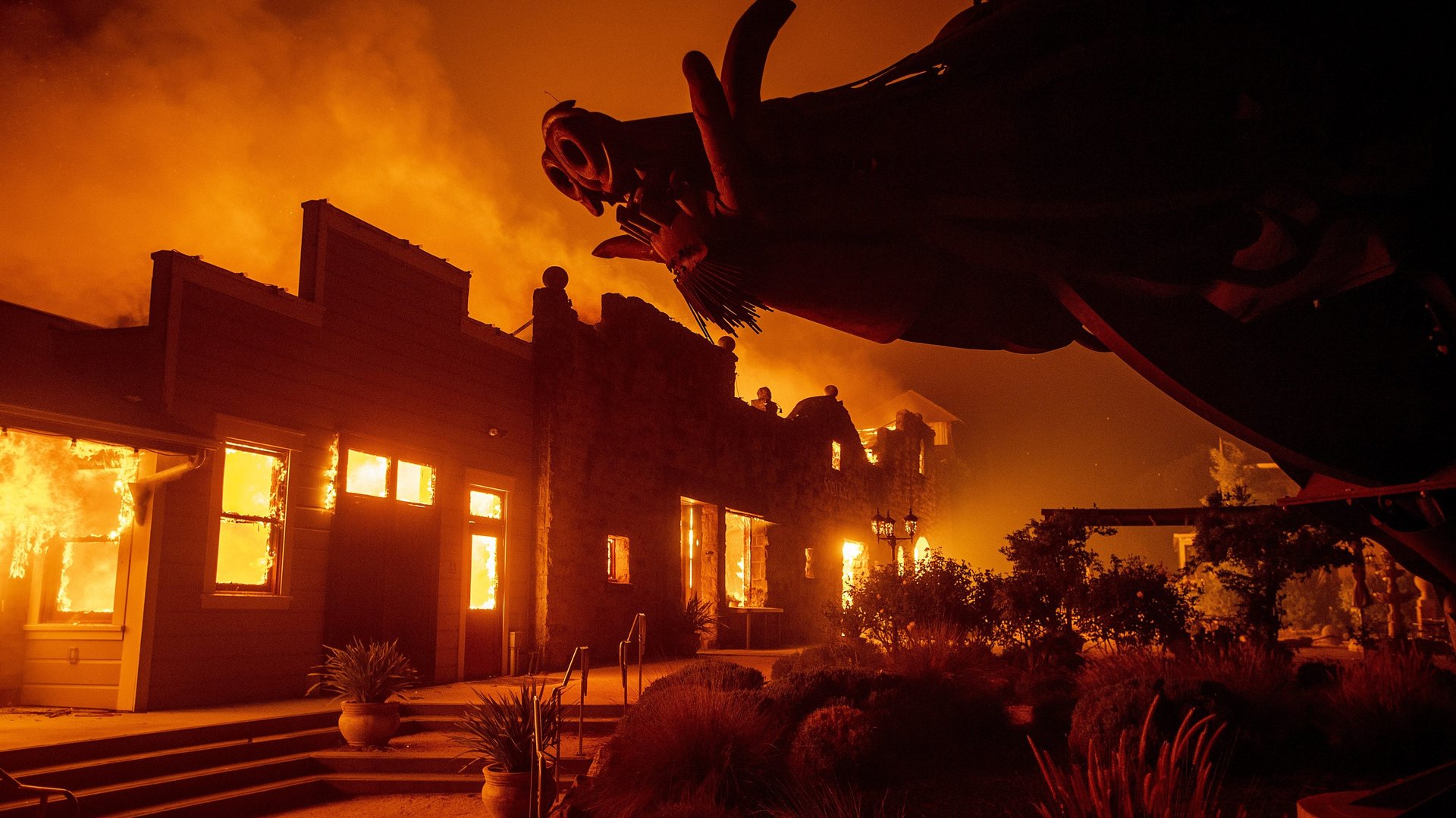People keep moving to fire-prone counties in the US
Americans are moving to homes that are more likely to burn as the climate warms. The flammable frontier between human settlement and wilderness, known as the wildland-urban interface, has become an increasingly popular destination for people seeking affordable housing in desirable locales.


Americans are moving to homes that are more likely to burn as the climate warms. The flammable frontier between human settlement and wilderness, known as the wildland-urban interface, has become an increasingly popular destination for people seeking affordable housing in desirable locales.
California is ground zero. Approximately 14.5 % of California’s houses are in the wildland-urban interface (Texas and Colorado rank right behind)—regions that are turning into tinderboxes thanks to a warming climate, unprecedented droughts, and overgrown forests. Of the 10 largest fires in California’s history, eight have raged since 2010. The worst fire season on record was 2020.
“People have been driven into the wildlife urban interface because they’re being pushed out” due to housing prices, says Skylar Olsen, the principal economist with ClimateCheck, a property risk assessment company analyzing climate risk.
Climate modelers are now putting a number on the hazard. ClimateCheck compared population growth data from the US Census with the likelihood of future fires, an estimate based on expected temperatures, precipitation, soil risk, plant growth, and other variables. While metro areas still attract most of the population growth in the US, many ex-urban or rural countries ranking high for fire hazards are growing fast. Among the counties with the highest fire risk, six ranked among the top 10% for population growth between 2013-2018.
Placer County, a rural region northwest of California’s capital, ranked the highest for fire risk, but saw its population grow almost 7% between 2013 and 2018, ranking it among the top 10th percentile of counties for population growth (on average, the US population grew at half that rate). An estimated 64,000 acres are expected to burn annually there by 2050.
Insurers are fleeing such high-risk regions. Extreme wildfires have killed dozens of people in recent years, and left thousands homeless. California had to step in this year to stop insurance companies from dropping or refusing to renew policies for 2.1 million households near fire-ravaged areas. But rebuilding in the same places may no longer be an option in a warming world.